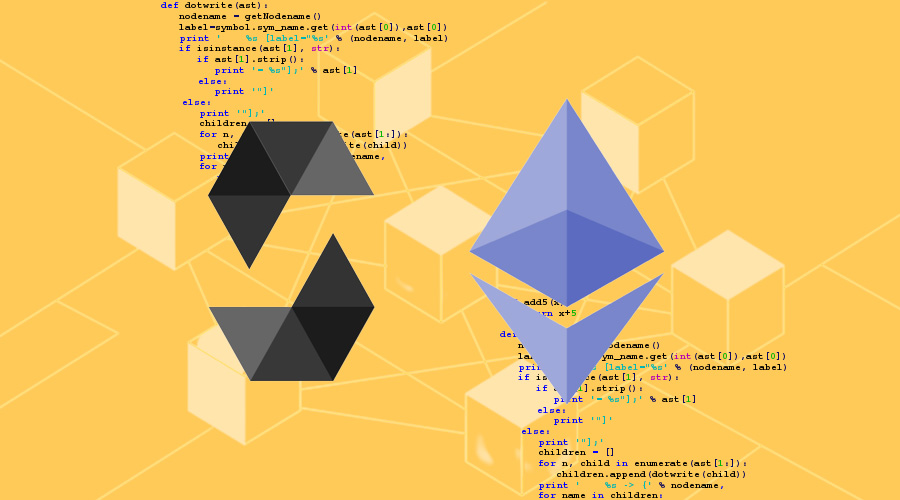[ad_1]
Know more about Solidity programming which is the smart contract language in Ethereum
The Solidity programming language was created expressly for use on the Ethereum blockchain network. It is a high-level, contract-oriented language with syntax similar to JavaScript, making it reasonably simple to learn for developers who are familiar with web development. Solidity is used to create smart contracts, which are self-executing agreements with terms which put straight into code. These contracts are subsequently deployed on the Ethereum blockchain, where any Ethereum user can invoke and execute them.
About Ethereum:
The most popular Blockchain is Ethereum, mainly to its adaptability in permitting the development of dApps on the platform. Not only that, but the smart contracts feature within Ethereum, which is the platform’s USP, is the icing on the cake. Smart contracts are designed to make it easier to execute essential business logic or rules on the network. Developing a dApp, like any other app, necessitates programming and executing codes on the system.
However, Solidity programming stands out as the most popular and widely used programming language on Ethereum. One of Ethereum’s most important features is its support for smart contracts. A smart contract is a contract that self-executes, with the terms of the agreement written directly into code. Smart contracts can be used to help with contract negotiation, verification, and enforcement. This enables the automation of many types of business transactions, such as asset transfers, financial contract execution, and supply chain logistics management.
Benefits of Solidity:
The ability to construct decentralized apps (dApps) on the Ethereum network is one of the key advantages of using Solidity. dApps are apps that run on a distributed network rather than a centralized server. Because there is no single point of failure in the system, they are more resistant to censorship, outages, and hacker efforts. Furthermore, because they are built on the blockchain, dApps are transparent and auditable, making them perfect for applications involving financial transactions or other sensitive data.
The ability to create coins on the Ethereum network is another advantage of utilizing Solidity. Tokens are digital assets that can represent anything from a tangible object, such as a commodity or a stock, to a virtual asset, such as a point or a vote. Tokens can be used to build decentralized exchanges (DEXs), which allow users to purchase and sell digital assets with one another directly. They can also be used to form decentralized autonomous organizations (DAOs), which allow a group of people to make choices and govern a digital asset collectively.
Solidity supports multiple inheritances via C3 linearization, which uses an algorithm to choose which method to employ in the event of multiple inheritances. The ‘Natural Language Specification’ is used in Solidity programming to translate user-centric specifications to machine-intelligible language.
When working with Solidity, keep in mind that, as a relatively new programming language, there is still a lot of uncertainty and risk associated. Because the Ethereum platform and ecosystem are still in development and change often, compatibility issues may arise, resulting in the breach of the contract and the smart contracts that you’ve created. Furthermore, because smart contracts are self-executing, it is critical to thoroughly test and audit the code before publishing it to the blockchain, as flaws in the code can result in funds being lost or other unforeseen effects.
Conclusion: Despite these concerns, many developers are enthusiastic about Solidity and the Ethereum platform. We should expect to see a wide range of new and innovative dApps and tokens established on the Ethereum network utilizing Solidity as blockchain technology evolves and more developers learn how to deal with smart contracts. However, like with any new technology, it comes with its own set of dangers and uncertainties, therefore smart contract code should be extensively tested and audited before being deployed to the blockchain.
[ad_2]
Source link

